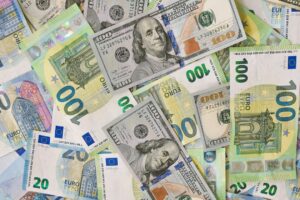Understanding Forex Trading Graphs: A Beginner’s Guide
Forex trading, also known as foreign exchange trading, is the buying and selling of currencies in the global marketplace. It is a decentralized market where participants trade currencies with the aim of making a profit. To navigate the forex market successfully, traders rely on various tools and indicators, and one of the most important tools is the forex trading graph.
A forex trading graph, also known as a forex chart, is a graphical representation of the price movements of a currency pair over a specific time period. It visually displays the relationship between the price of a currency pair and time, helping traders to identify patterns, trends, and potential trading opportunities.
There are different types of forex trading graphs, but the most common ones are line graphs, bar graphs, and candlestick graphs. Each type of graph provides different information, and traders can choose the one that best suits their trading style and preferences.
Line graphs are the simplest type of forex trading graph. They connect the closing prices of a currency pair over a specified period of time, forming a line that shows the overall direction of the price movement. Line graphs are useful for traders who want to get a quick overview of the price trend and spot any significant changes in the market.
Bar graphs, also known as OHLC (Open, High, Low, Close) graphs, provide more detailed information compared to line graphs. Each bar represents a specific time period and shows the opening price, highest price, lowest price, and closing price of a currency pair. The vertical lines represent the price range between the highest and lowest price, while the horizontal lines represent the opening and closing prices. Bar graphs allow traders to analyze the price volatility and the relationship between the opening and closing prices.
Candlestick graphs, similar to bar graphs, also provide detailed information about the price movement. Each candlestick represents a specific time period and consists of a body and wicks. The body represents the price range between the opening and closing prices, while the wicks represent the highest and lowest prices during that time period. Candlestick graphs are widely used by traders as they provide more visual information and help identify patterns and trends more effectively.
Understanding the components of a forex trading graph is essential, but it is equally important to interpret the information correctly. Traders use various technical indicators and tools to analyze the data presented in the graph and make informed trading decisions.
One of the key concepts in forex trading graph analysis is support and resistance levels. Support levels are price levels where the currency pair has historically found buying interest, causing the price to bounce back up. Resistance levels, on the other hand, are price levels where the currency pair has historically found selling interest, causing the price to reverse downward. Identifying support and resistance levels on the graph helps traders predict potential price movements and determine entry and exit points.
Another important concept is trend analysis. Traders examine the forex trading graph to identify trends, which can be upward (bullish), downward (bearish), or sideways (consolidation). Trend analysis helps traders determine the overall direction of the market and make trading decisions accordingly. Trend lines, which are drawn on the graph to connect the highs or lows of the price movement, can be used to confirm the direction of the trend.
In addition to support and resistance levels and trend analysis, traders also use various technical indicators such as moving averages, oscillators, and Fibonacci retracement levels to enhance their analysis and increase the accuracy of their trading decisions.
In conclusion, understanding forex trading graphs is crucial for beginner traders as it provides valuable information about price movements, trends, and potential trading opportunities. Line graphs, bar graphs, and candlestick graphs are commonly used to analyze the forex market. Traders use various technical indicators and tools to interpret the information presented in the graph and make informed trading decisions. By mastering the art of graph analysis, beginner traders can improve their chances of success in the dynamic and exciting world of forex trading.





